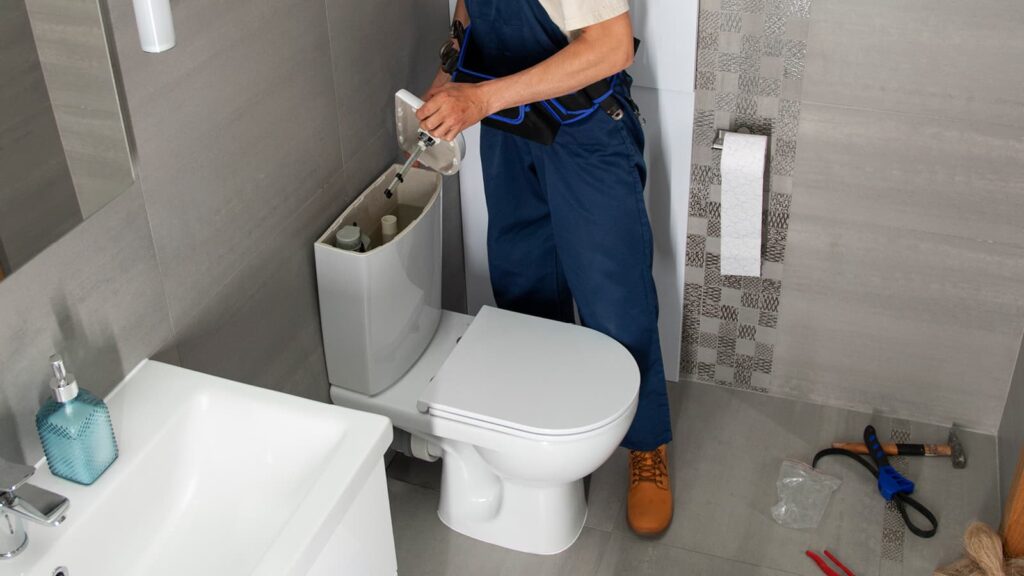Gas Leak: Why It Happens and What to Do
Gas leaks are a serious safety hazard that can lead to devastating consequences if not addressed promptly. From explosions and fires to health complications…

It can be incredibly frustrating when your toilet tank won’t fill up properly after a flush. If left unattended, a toilet that will only partially refill can lead to strong flushes, constant running, and potential water damage. A few common culprits are behind a toilet tank not filling, and understanding the root cause is key to getting your toilet back in working order.
The main reason a toilet tank does not fill or fill slowly is issues with the toilet fill valve. The fill valve is the mechanism responsible for refilling the tank with water after each flush. Over time, the fill valve can become clogged with mineral deposits, worn out, or out of proper adjustment, all of which will impact the tank’s ability to fill completely.
Other potential causes include water supply problems, faulty flappers, and cracks in the tank or bowl. In this guide, we’ll explore the most common reasons behind a toilet tank that’s not filling and provide step-by-step troubleshooting tips to get your toilet working like new again.
First, it’s helpful to review how the tank refill process works to understand why a toilet tank may need to be filled. When you flush the toilet, the flapper at the bottom of the tank opens, allowing water to rush from the tank into the toilet bowl. As the tank empties, the float ball or filler float drops down, signaling the fill valve to turn on.
The fill valve then supplies fresh water back into the tank through a refill tube. Simultaneously, the flapper seals the drain opening to prevent the new water from immediately flowing into the bowl. Once the tank is full and the float has risen to the proper level, the fill valve shuts off, completing the refill cycle.
This process happens quickly, but problems can arise if any of the tank’s components – the fill valve, float, or flapper – need to be fixed. Let’s take a closer look at the most common culprits behind a toilet tank not filling.
The fill valve is the most likely source of a toilet tank refilling problem. There are a few ways the fill valve can cause water flow issues:
Problems with the water supply to the toilet can also prevent the tank from refilling properly:
While fill valve and water supply issues are the most common reasons, there are a few other potential causes for a toilet tank that won’t fill:
Regular maintenance and inspection of your toilet components can help ensure they continue functioning correctly and prevent costly repairs down the line. Here are some troubleshooting steps to take if you’re dealing with a toilet tank that’s not filling:
If you’ve checked all these potential issues and your toilet tank is still not filling or filling extremely slowly, it may be time to call a professional plumber. Persistent refill problems could indicate a more serious issue with your home requiring expert diagnosis and plumbing repair.
Our experienced plumbers at TaskPro have the tools and expertise to quickly identify the root cause of your toilet troubles and get it working like new again. We can also guide proper toilet maintenance to prevent future problems and extend the life of your plumbing fixtures.
Don’t let a stubborn toilet tank ruin your day. Call us today if you have any questions or need plumbing services. We’ll get your toilet back in top shape in no time.
Yes, you can manually fill a toilet tank if it’s not refilling on its own. Remove the tank lid and pour water directly into the tank using a bucket or pitcher. However, this is a temporary fix, and you’ll want to address the underlying issue causing the tank not to fill properly.
A properly functioning toilet tank should automatically refill via the fill valve mechanism after each flush. When the flapper at the bottom of the tank opens during a flush, the float ball drops and signals the fill valve to turn on. The fill valve then supplies fresh water back into the tank until the float rises to the proper level, at this point, the fill valve shuts off.
Signs your toilet fill valve may be bad include:
Share this Guide
Gas leaks are a serious safety hazard that can lead to devastating consequences if not addressed promptly. From explosions and fires to health complications…
Septic tanks are a vital component of wastewater management systems, particularly in areas where municipal sewer systems are unavailable. These underground structures treat and…
Choosing the right toilet for your home is more than a simple decision; it’s an investment in comfort, efficiency, and functionality. The type of…